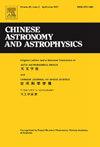圆锥轨道统一轨道元在地月轨道预测中的应用
Q4 Physics and Astronomy
引用次数: 0
摘要
在用传统的椭圆轨道元描述航天器运动时,如果其轨道由椭圆变为双曲线,则难以继续计算。为了解决这个问题,对经典的椭圆轨道元进行了改进,利用一组适用于任何圆锥截面的轨道元对运动方程进行积分。元素集适用于任何偏心率e小于0和倾角0≤i<;180°,奇点只发生在i=180°。给出了摄动运动的基本转换公式和方程。随后,对地月天体进行了轨道预测,并将结果与笛卡尔坐标系的计算结果进行了比较。结果表明,由这些轨道元得到的结果是足够精确的,并且当这些轨道元的变化不是特别剧烈时,计算效率是有利的。为了解决轨道元在实际应用中可能出现的i=180°奇异性问题,提出了各种变通办法,包括改变状态变量和固定积分步长,并评估了它们的适用性。本文章由计算机程序翻译,如有差异,请以英文原文为准。
The Application of Unified Orbital Elements for Conic Orbits in Cislunar Orbit Prediction
When describing the motion of a spacecraft using traditional elliptical orbital elements, if its orbit changes from elliptical to hyperbolic, it becomes difficult to continue the calculation. In order to address this issue, improvements are made upon classical elliptical orbital elements, utilizing a set of orbital elements applicable to any conic section to integrate the equation of motion. The set of elements is applicable for any eccentricity and inclination , with the singularity occurring only for . The basic conversion formulas and equations of perturbed motion are provided. Subsequently, orbit predictions for cislunar objects are conducted, and the results are compared with calculations using Cartesian. The findings indicate that the results obtained from these orbital elements are sufficiently accurate, and the computational efficiency is advantageous when the changes in the elements are not particularly drastic. In addressing the issue of the singularity at that may arise in the practical application of orbital elements, various workarounds are proposed, including changing state variables and fixing integration step sizes, and their applicability is assessed.
求助全文
通过发布文献求助,成功后即可免费获取论文全文。
去求助
来源期刊

Chinese Astronomy and Astrophysics
Physics and Astronomy-Astronomy and Astrophysics
CiteScore
0.70
自引率
0.00%
发文量
20
期刊介绍:
The vigorous growth of astronomical and astrophysical science in China led to an increase in papers on astrophysics which Acta Astronomica Sinica could no longer absorb. Translations of papers from two new journals the Chinese Journal of Space Science and Acta Astrophysica Sinica are added to the translation of Acta Astronomica Sinica to form the new journal Chinese Astronomy and Astrophysics. Chinese Astronomy and Astrophysics brings English translations of notable articles to astronomers and astrophysicists outside China.
 求助内容:
求助内容: 应助结果提醒方式:
应助结果提醒方式:


